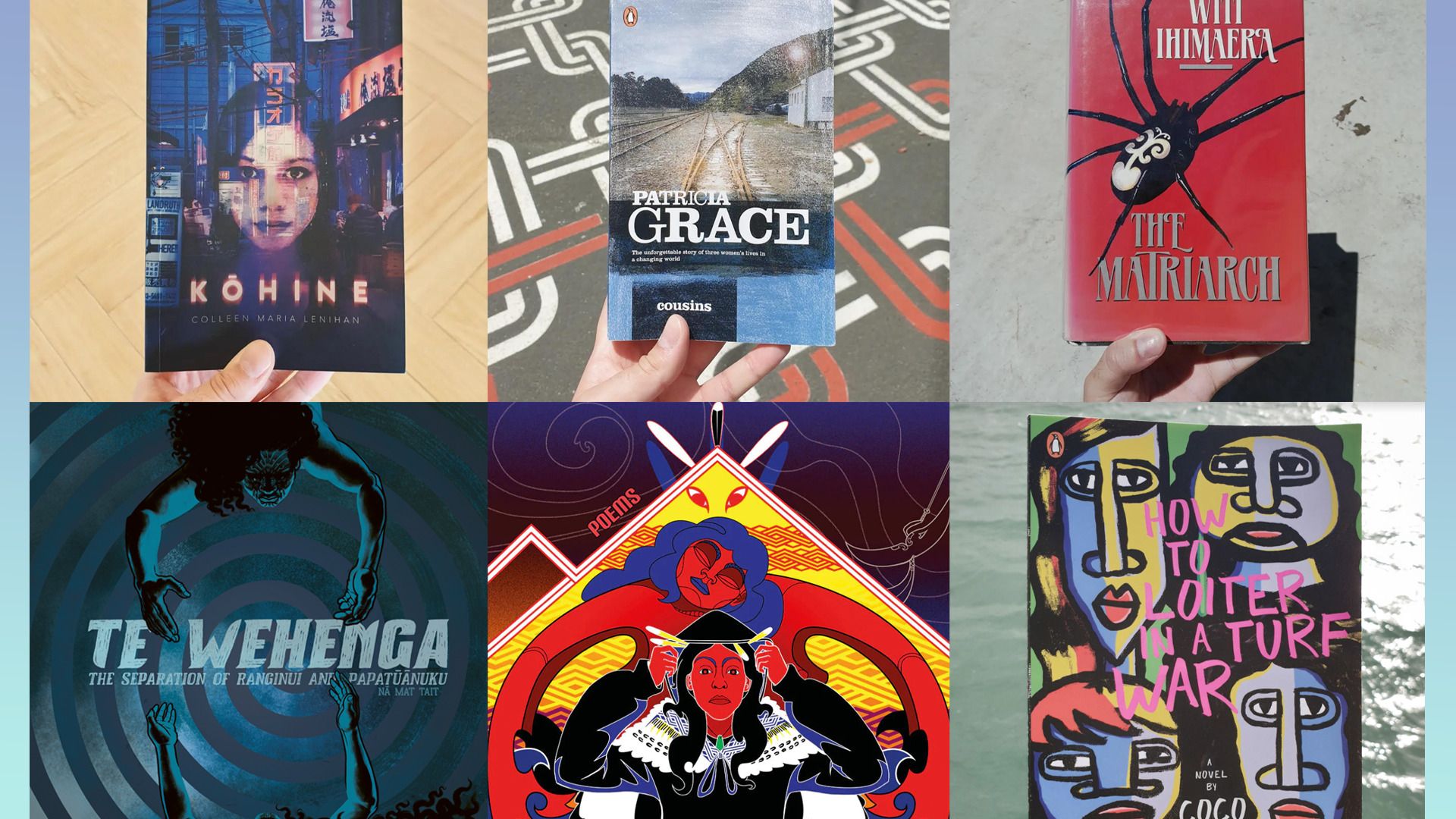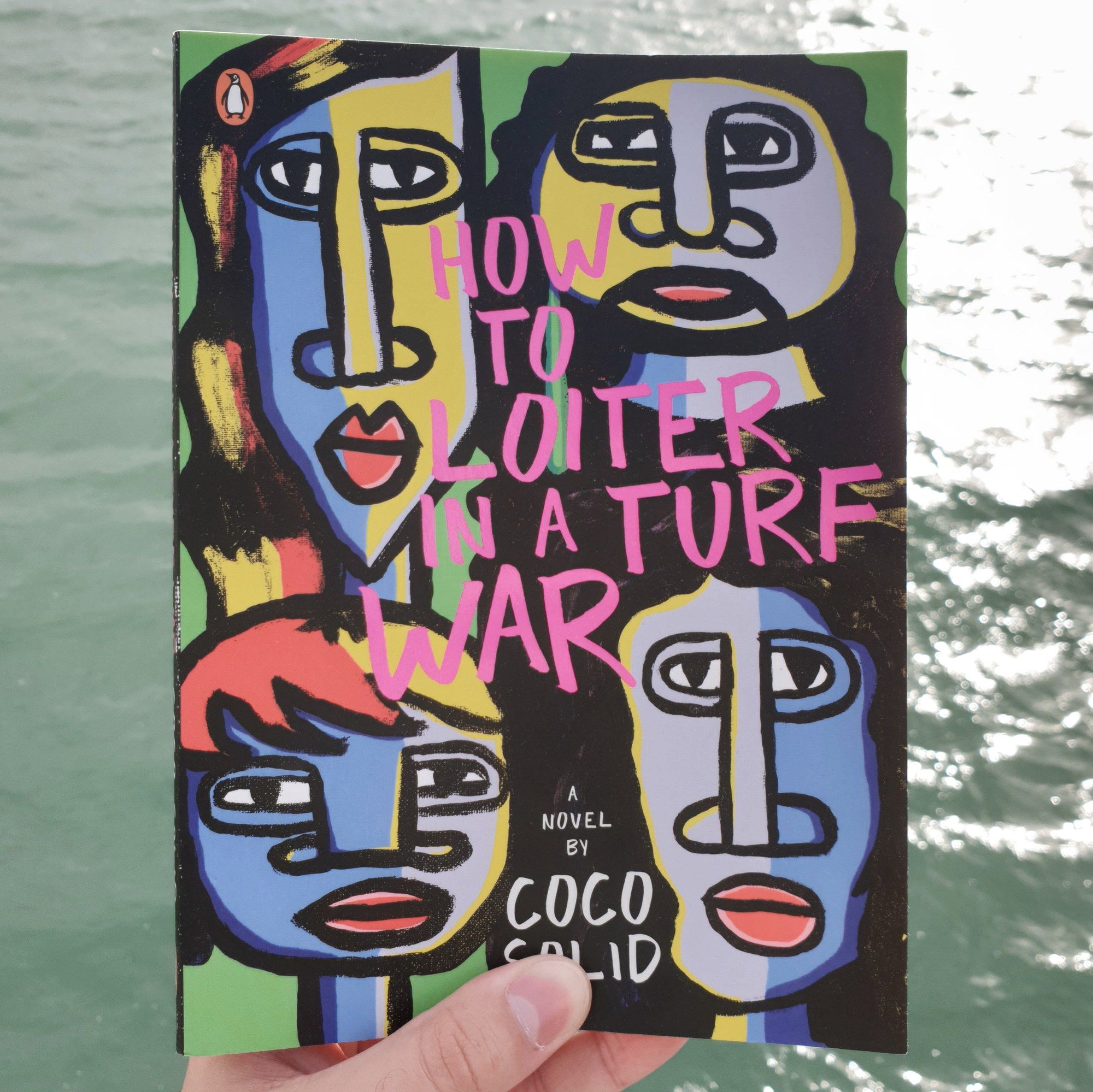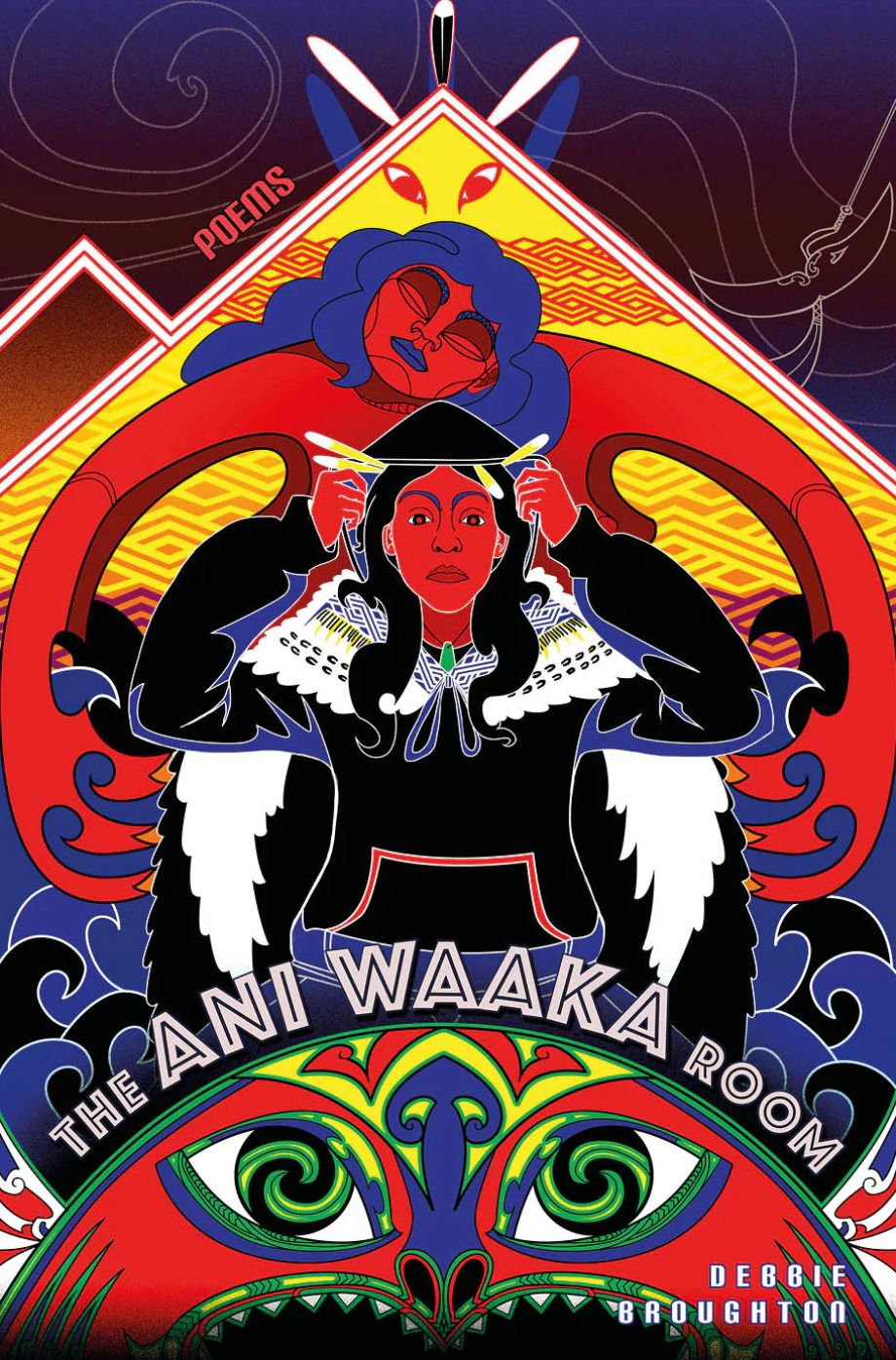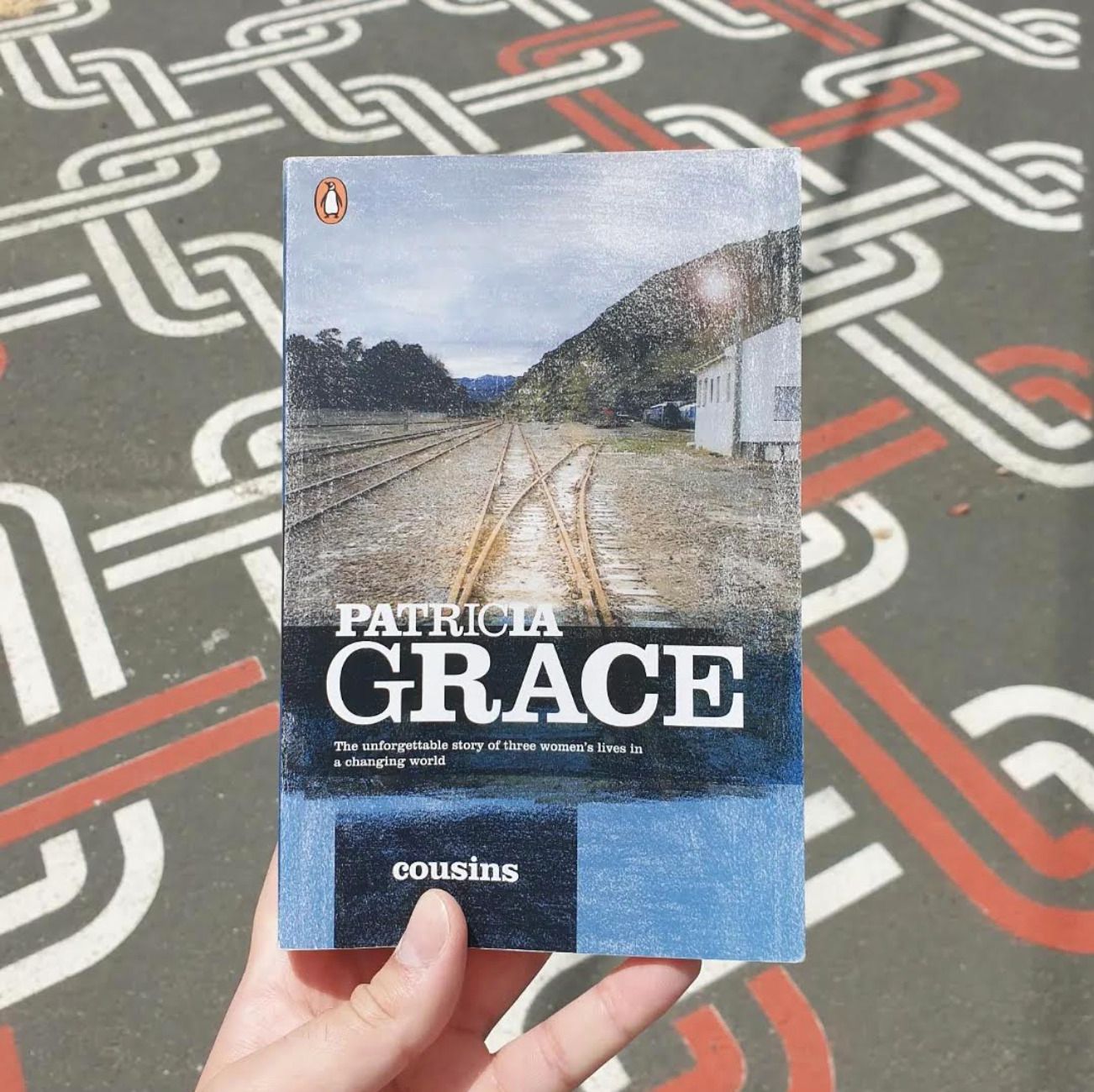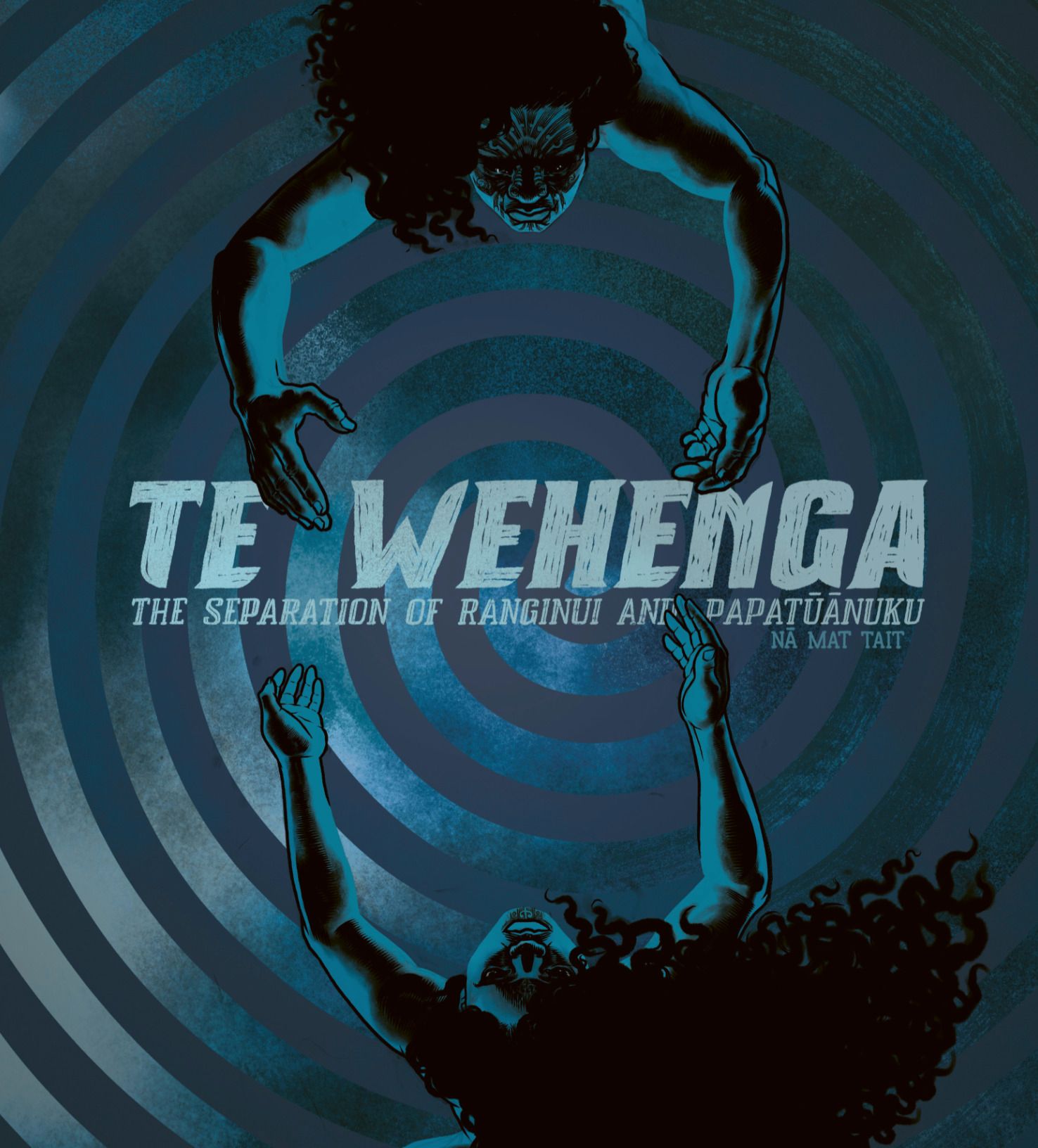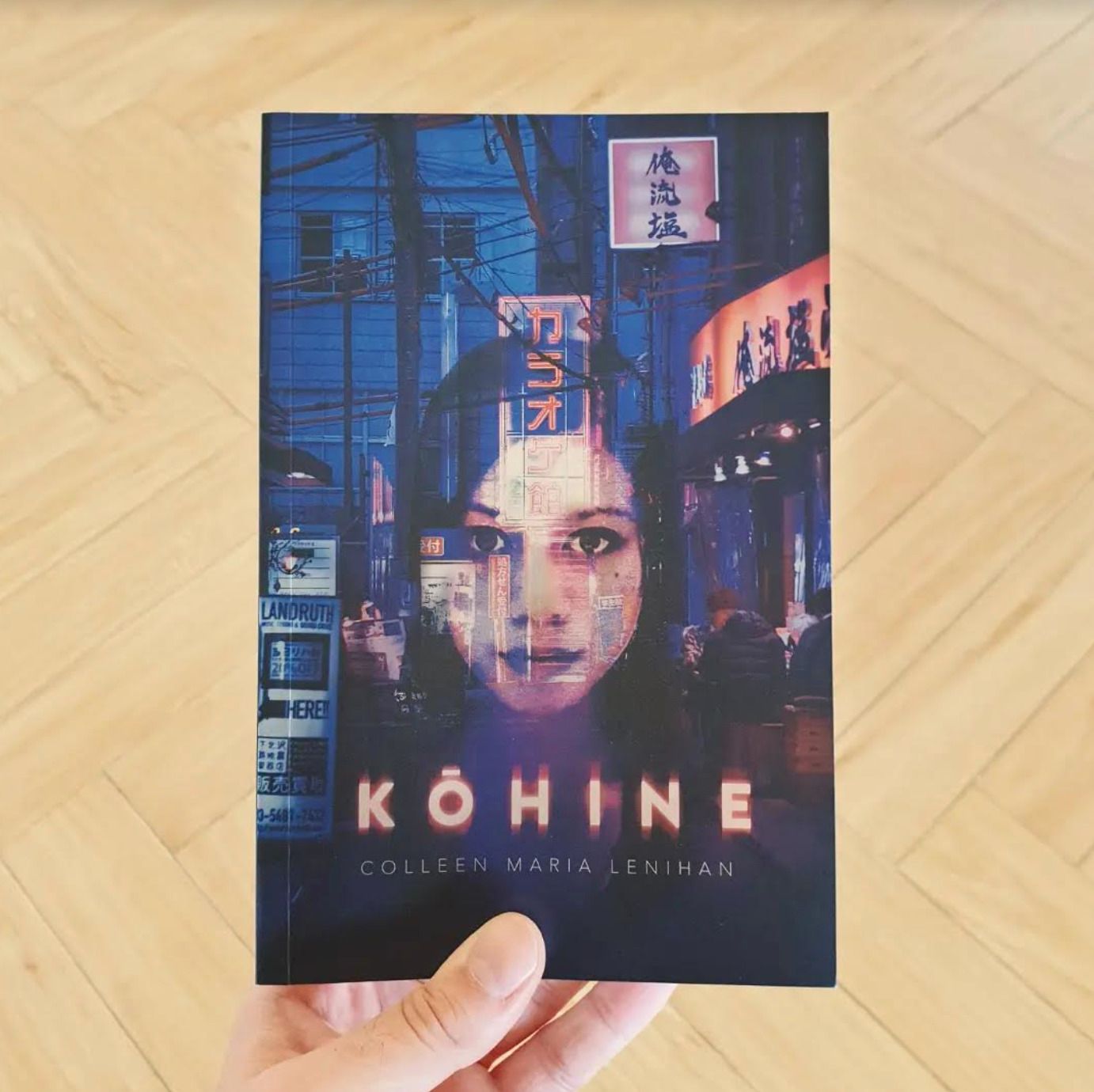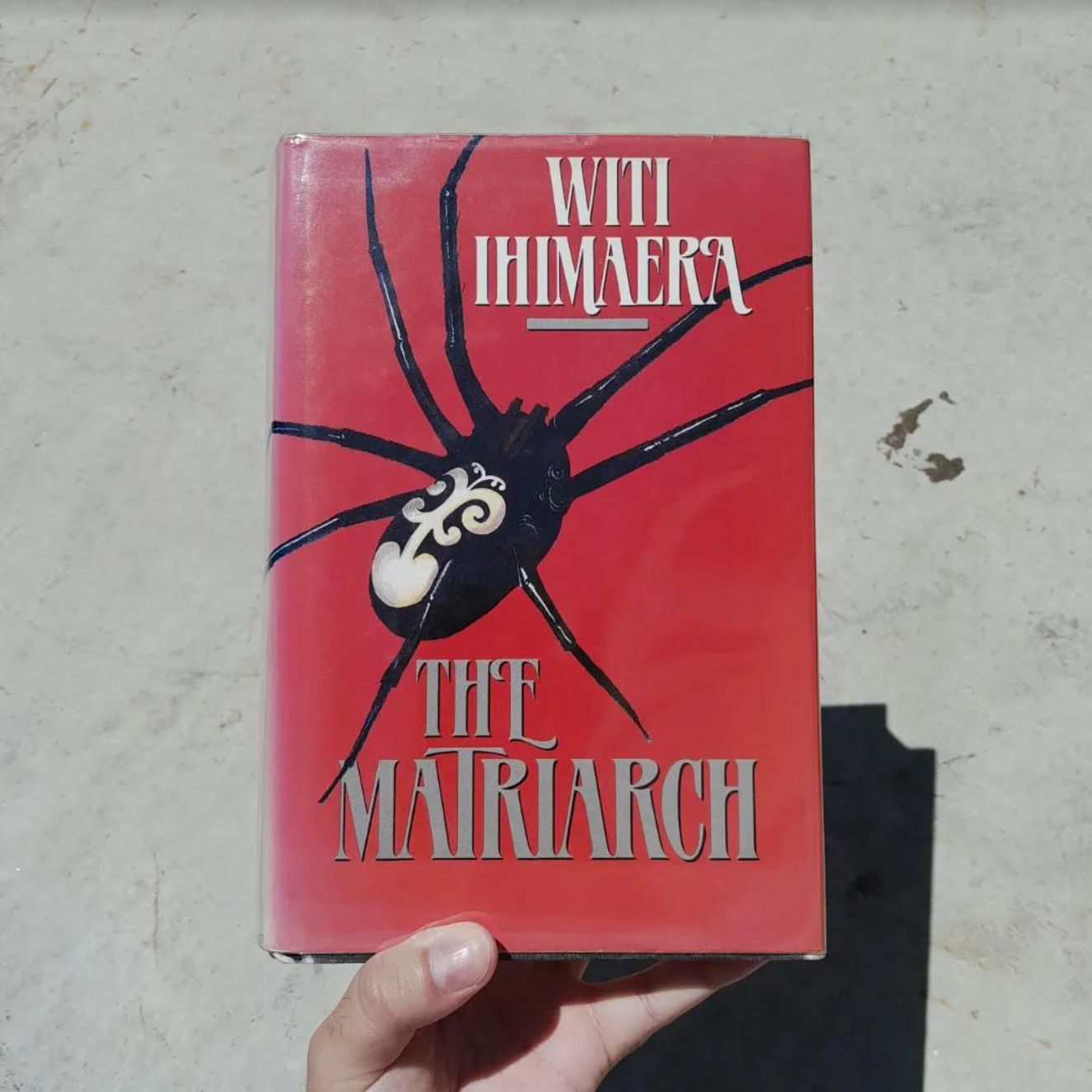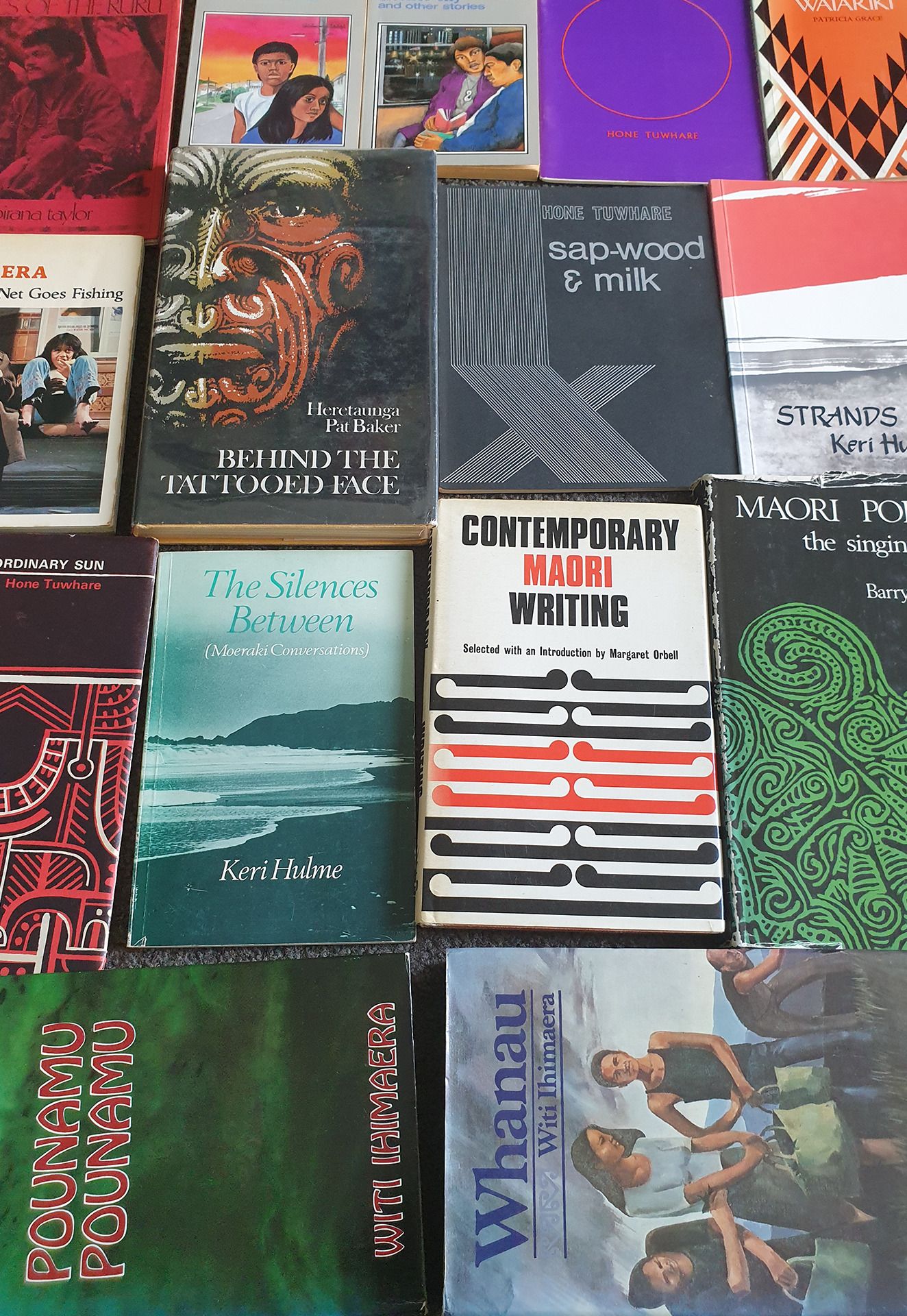Raumati Reading Roundup
Need an extra boost to finish your summer reading goals? Jordan, who runs the much-loved Instagram page Māori Lit Blog, offers the perfect books to round off raumati.
Here are six recommendations of pukapuka by Māori authors to check out in the remaining weeks of raumati. Some of these are classics; some are recent. A few of them can be read in a single day. All of them are representative of the breadth and quality of modern Māori literature, and well worth a look as you keep your holiday reading streak alive.
Image supplied by @maorilitblog
HOW TO LOITER IN A TURF WAR / Coco Solid (2022)
A vibrant novel about three young friends in Tāmaki Makaurau navigating the pressures of their rapidly gentrifying neighbourhood.
To put it bluntly, How to Loiter in a Turf Waris an instant coming-of-age classic, and can even be read in a single sitting. Its drifting, episodic narrative is the perfect vehicle for exploring an issue like gentrification: a force that can feel formless and impossible to combat. Coco Solid nails that youthful feeling of uncertainty: when one knows that injustice is occurring but not how to effectively resist it. Turf War is a bold representation of community and of artistic rebellion in the face of oppression. I love literature about literature, and this novel is one of the most vibrant intertextual mixes I’ve ever read: prose flows into poetry, into academic writing, into visual art. Turf War sincerely believes in the creativity, community and humour (the novel is hilarious) of those that gentrification seeks to leave in the dust.
Image sourced from Te Tākupu / Te Wānanga o Raukawa
THE ANI WAAKA ROOM / Debbie Broughton (2022)
A cutting poetry collection that examines the dark history that lies beneath Aotearoa’s paved city streets.
Debbie Broughton’s The Ani Waaka Roomhas flown under the radar compared to some other 2022 poetry collections, but its brisk, clever set of poems deserves your attention. Many of the pieces in The Ani Waaka Room read like small experiments in structure and form: poems take the shape of conversations, academic extracts, emails and personal confessions. Broughton’s witty vignettes capture the comedy and tragedy of being Māori and the process of cultural reconnection – like being unable to not pronounce it ‘Hair-a-tonga Street, Petone’ when talking to someone you grew up with. This is poetry that has fun with poetry, even as it navigates serious concerns. The Ani Waaka Room is cheeky and no-nonsense in style, often reading more like prose – perhaps the perfect collection for people who don’t read a lot of poetry.
Image supplied by @maorilitblog
COUSINS / Patricia Grace (1992)
A sweeping story of three cousins fractured by forces beyond their control.
With the recent film adaptation renewing interest in Cousins, there has never been a better time to check out this classic Patricia Grace novel. I see a lot of love for Grace’s early works – Potiki and her short stories of the 70s and 80s – and Cousins is, in many ways, the culmination of that work. The novel’s vibrant narrative voices reflect the way Grace’s earlier stories often toyed with ‘conventional’ syntax to embody authentic, everyday speech. For example, many sections recall The Geranium’sability to bend mundane details into a bleak image of sad suburban existence. Potiki’s shifting perspectives are also revisited here as a means to reinforce the protagonists’ respective journeys of cultural reconnection. Cousins is, on some level, about finding one’s voice within Te Ao Māori, and Grace’s complex approach to narrative voice is both silencing and – eventually – liberating. This pukapuka is Patricia Grace’s masterpiece, and it is arguably still the most thoughtful and fully realised exploration of Te Ao Māori, of whenua and whānau – and how they were fractured in the wake of colonialism.
Image sourced from Allen & Unwin
TE WEHENGA / Mat Tait (2022)
A stylish retelling of the Māori creation myth, illustrated by the author.
There are so many great pukapuka for the tamariki currently available in stores, but Te Wehengainstantlygrabbed my attention on its release last year. Mat Tait has boldly reimagined the separation of Ranginui and Papatūānuku, and his vision of Te Pō – The Night – is something special. Te Wehenga is dark; each page is dominated by deep, dark blacks, greens and blues, with only select words and images rising from their murky tones. The story spirals across its pages and Tait depicts Te Pō as visceral and uneasy (as it should be). Te Wehenga is suitable for tamariki, and its darker energy should also appeal to readers of any age. The history of modern Māori literature is rich with instances of writing and art intertwining to breathe new life into mythological narratives; with this work, Tait joins that tradition.
Image supplied by @maorilitblog
KŌHINE / Colleen Maria Lenihan (2022)
A series of interconnected short stories that travel between Aotearoa, Japan and beyond.
Kōhinewas one of 2022’s pleasant surprises, a delicately crafted story cycle – somewhere between novel and short story collection – about outsiders adrift in unfamiliar cityscapes. Kōhine mostly splits its action between Aotearoa and Tokyo, and its style pulls from both Māori storytelling conventions and contemporary Japanese fiction: two literary traditions unafraid to blur the line between the ‘real’ and the spiritual in surprising ways. With its crisp, coolly detached narrative voice, Kōhine is highly readable, even as it regularly dives into confronting – and even downright bizarre – terrain. Lenihan’s debut pukapuka is a smart, sensitive collection about tragedy and healing.
Image supplied by @maorilitblog
THE MATRIARCH / Witi Ihimaera (1986)
A trailblazing work of Māori literature that blends fiction, history and mythology.
Despite not being Ihimaera’s most accessible work, The Matriarchhas somehow become my favourite. This is his most ambitious novel, to the point where ‘novel’ hardly describes its scope; The Matriarch is history and mythology, a precise unfurling of Te Ao Māori that focuses on the complex relationship between an addled narrator and his grandmother – the enigmatic ‘matriarch’. The narrative here is unconventional, more of a lurching series of slow-moving images than a ‘plot’, but the joy is in Ihimaera’s confidence that each exacting detail is vital. Of course,the novel opens with an extended explanation of Te Kore and Te Pō, and, yes, we need to understand how – during a key scene – the meal before the characters was prepared. I’m sure many readers will find parts of The Matriarch overwhelming, but that’s its beauty. The Matriarch, much like the art adorning Rongopai marae – memorably described within the novel – is a rich tapestry of influences and knowledge. To be Māori is to live between worlds, alongside tūpuna, within dreams; and The Matriarch communicates that truth to Aotearoa’s reading public more clearly than any work before it.
You can follow Māori Lit Blog on Instagram (@maorilitblog) to get a regular, sprawling selection of thoughts and recommendations on Māori publishing.
